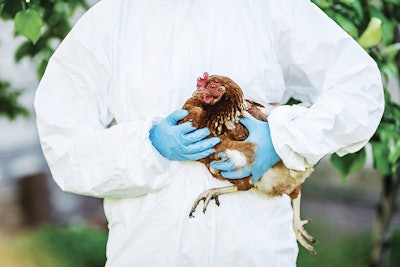
Researchers at University of California, Riverside (UC Riverside) identified a new immune pathway that helps protect chickens against viral infections.
“This research study helps highlight how little we know about a chicken’s immunity against viruses,” said Scott Pegan, a professor of biomedical sciences in the UC Riverside School of Medicine.
“One of the things that we show in this paper is that we felt that this protein… maybe played a kind of a role similar to the ISG15 protein that we are very familiar with in mammalian immunity.”
The discovery, published in Frontiers in Immunology, could lead to better poultry vaccines. It could also help scientists better understand how birds can act as potential reservoirs for human pathogens, such as influenza or Crimean-Congo hemorrhagic fever.
The role of OASL in the bird immune system
Using a combination of cell culture and molecular biology techniques, Pegan and his team found that an avian immune protein called OASL contained features similar to a mammalian protein known as ISG15.
“What we do know about chickens is that they don’t have a protein called ISG15, which is part of a pathway that allows the cells to communicate via interferon,” Pegan added.
“We kind of stumbled on this protein called OASL.”
Furthermore, avian OASL contain a sequence motif of amino acids, LRLRGG, that allow the protein to attach to other host proteins, stimulating other antiviral pathways, the study revealed. In addition, the OASL region where the motif attaches to has an atomic structure like the one seen in ISG15.
The similarities suggest that OASL plays a similar role to ISG15. Although mammals also have OASL proteins, they lack the ability to conjugate to other proteins. Birds likely evolved OASL as a centralized approach to carry out the functions of ISG15 and other immune pathways.
The findings could lead to the development of better vaccines and treatments for poultry diseases or allow for the breeding of poultry that is more resistant to certain infections.
















